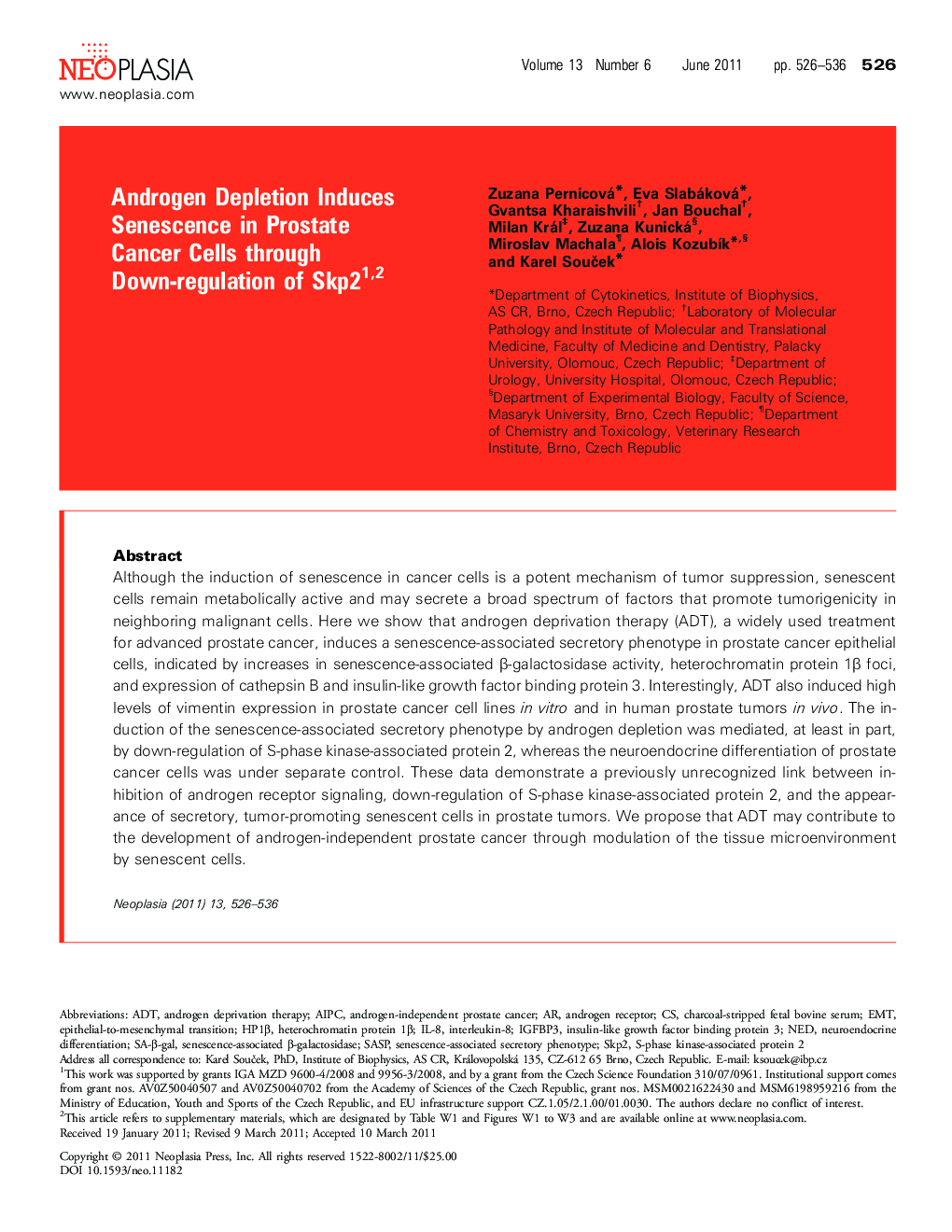| Article ID | Journal | Published Year | Pages | File Type |
|---|---|---|---|---|
| 2151529 | Neoplasia | 2011 | 15 Pages |
Abstract
Although the induction of senescence in cancer cells is a potent mechanism of tumor suppression, senescent cells remain metabolically active and may secrete a broad spectrum of factors that promote tumorigenicity in neighboring malignant cells. Here we show that androgen deprivation therapy (ADT), a widely used treatment for advanced prostate cancer, induces a senescence-associated secretory phenotype in prostate cancer epithelial cells, indicated by increases in senescence-associated β-galactosidase activity, heterochromatin protein 1β foci, and expression of cathepsin B and insulin-like growth factor binding protein 3. Interestingly, ADT also induced high levels of vimentin expression in prostate cancer cell lines in vitro and in human prostate tumors in vivo. The induction of the senescence-associated secretory phenotype by androgen depletion was mediated, at least in part, by down-regulation of S-phase kinase-associated protein 2, whereas the neuroendocrine differentiation of prostate cancer cells was under separate control. These data demonstrate a previously unrecognized link between inhibition of androgen receptor signaling, down-regulation of S-phase kinase-associated protein 2, and the appearance of secretory, tumor-promoting senescent cells in prostate tumors. We propose that ADT may contribute to the development of androgen-independent prostate cancer through modulation of the tissue microenvironment by senescent cells.
Keywords
ADTAIPCS-phase kinase-associated protein 2Skp2IGFBP3NEDSASPIL-8SA-β-galsenescence-associated β-galactosidaseInterleukin-8Neuroendocrine differentiationEMTADT, Androgen deprivation therapyAndrogen-independent prostate cancerSenescence-associated secretory phenotypeInsulin-like growth factor binding protein 3epithelial-to-mesenchymal transitionAndrogen Receptor
Related Topics
Life Sciences
Biochemistry, Genetics and Molecular Biology
Cancer Research
Authors
Zuzana Pernicová, Eva Slabáková, Gvantsa Kharaishvili, Jan Bouchal, Milan Král, Zuzana Kunická, Miroslav Machala, Alois KozubÃk, Karel SouÄcek,
